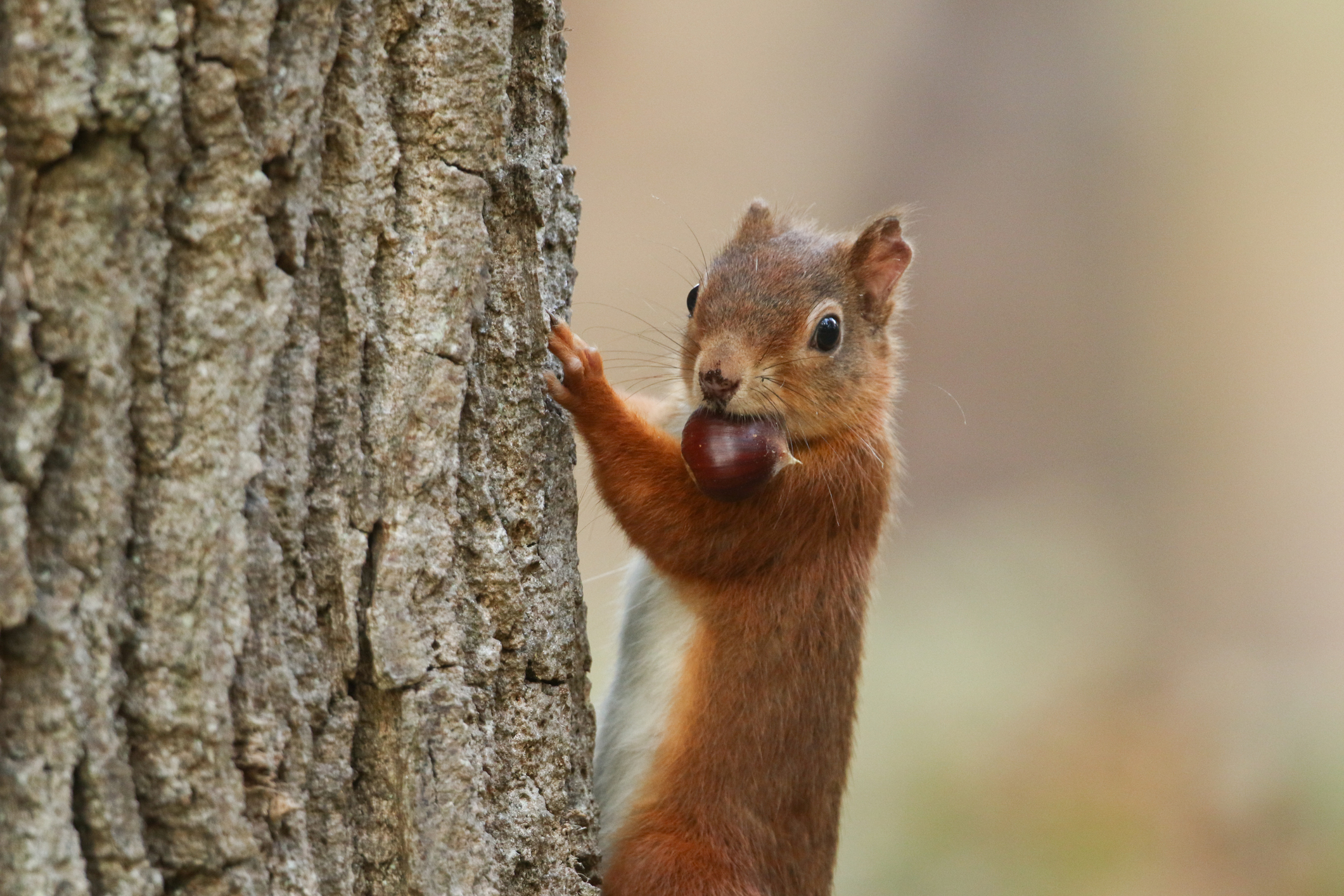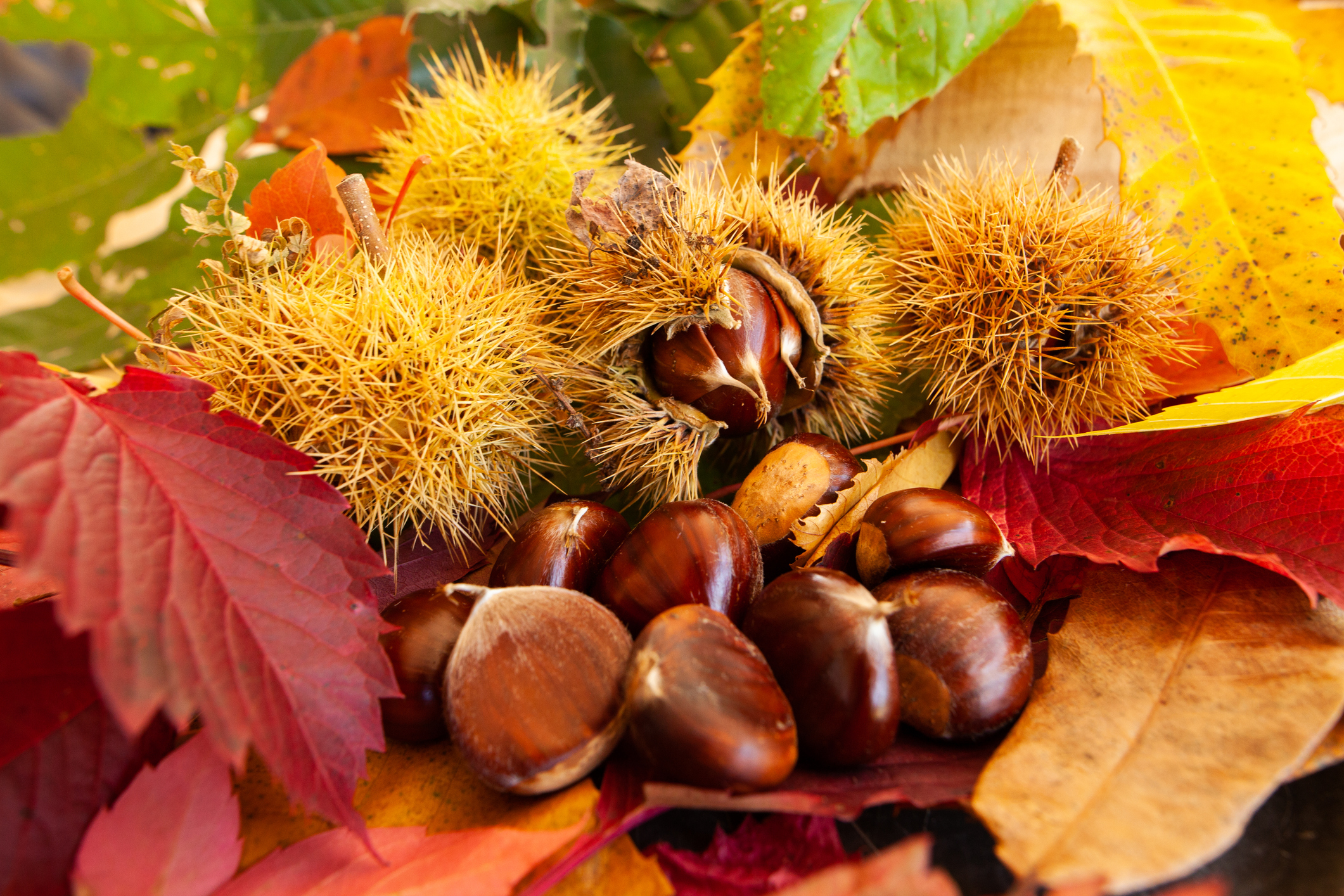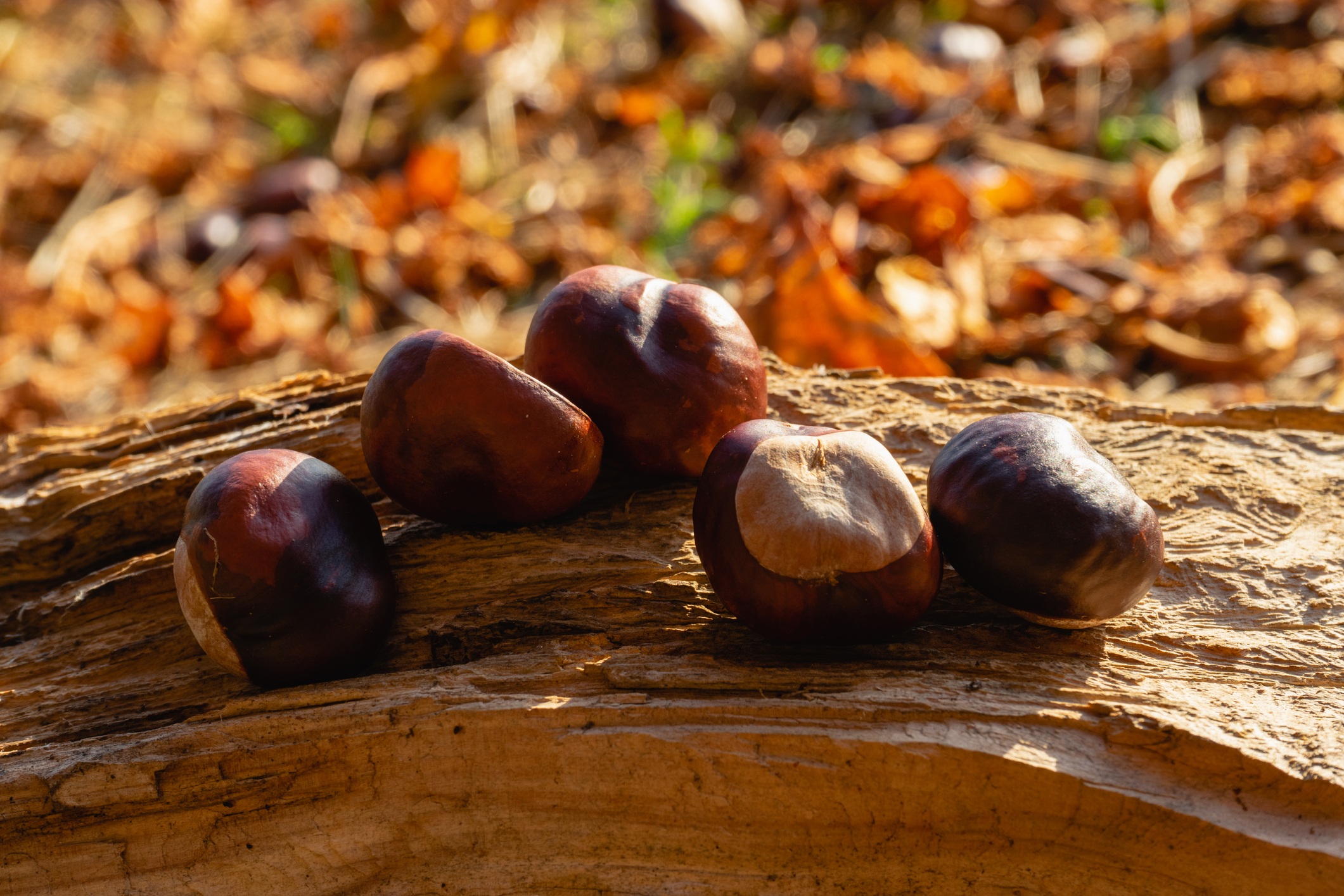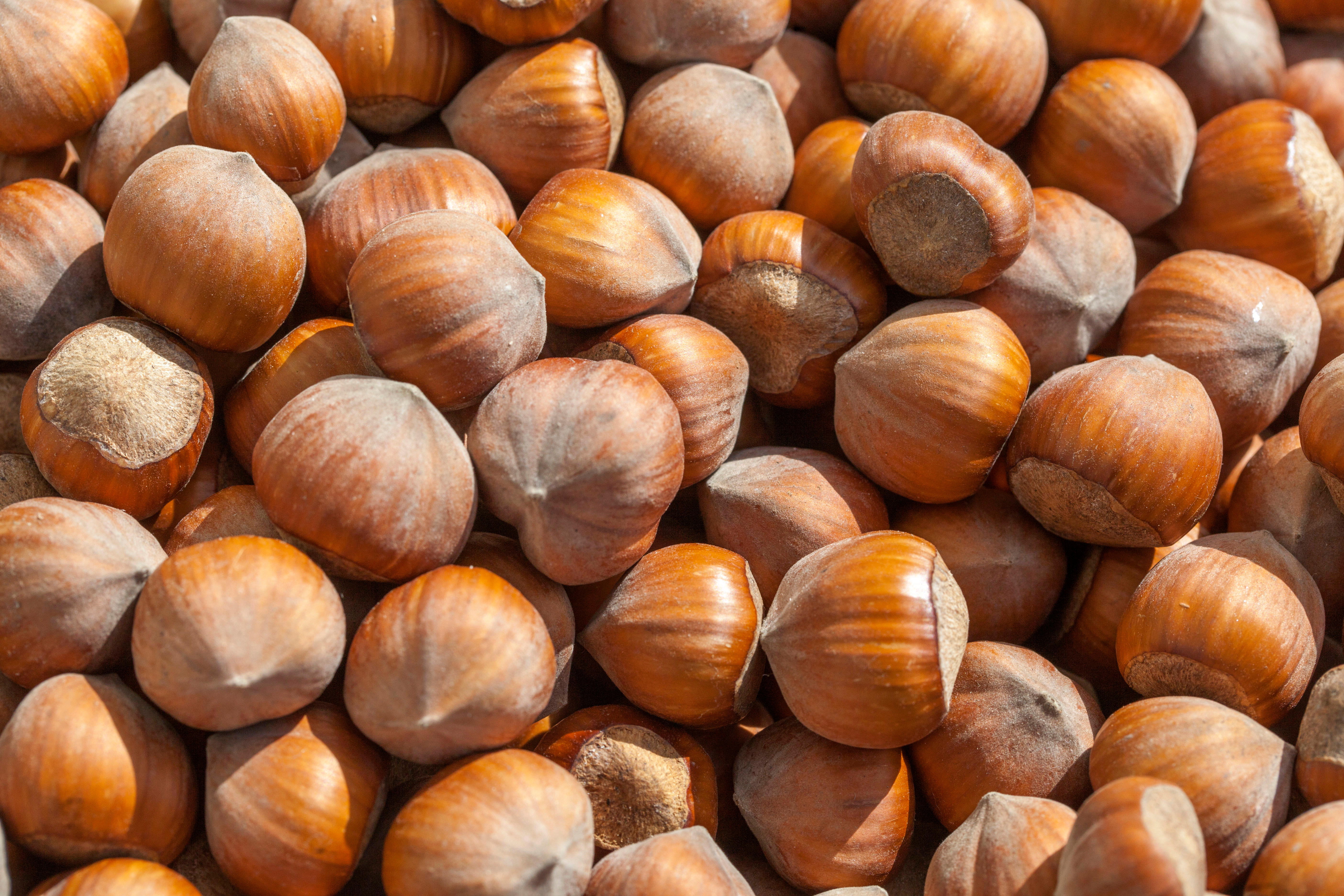John Lewis-Stempel: Why autumn is the time to go nuts
Whether enjoyed as a healthy snack or deployed as the playground weapon of choice, nuts are versatile, abundant and plentiful now, says John Lewis-Stempel.


What is a nut? As definitions go, this is a surprisingly hard nut to crack. Botanically, a nut is a dry fruit that consists of a hard shell covering a seed. True nuts tantalisingly available in a British wood or hedge near you include beech, sweet chestnuts and hazelnuts. This leaves the walnut, brought here by the Romans to confuse matters (as well as improve our cuisine). Despite its nomenclature, a walnut has characteristics of a drupe, a fruit that is fleshy on the outside with an interior shell over seed, as well as a nut. Hence our friends across the Channel picking green walnuts for pickled treats.
If the popular usage of ‘nut’ is incompatible with botanical exactitude, humans and animals have long agreed it would be nuts to overlook true nuts (and that globular, wrinkly bundle of imprecision, the walnut) in the diet. There’s the rub. Getting to the nuts before the squirrels, the wood mice, voles, badgers, nuthatches (of course), wood pigeons, the larvae of micro-moths (headed by the appropriately named large beech piercer) and the hundreds of other insects, birds and beasts that consume nuts, with a special mention to the wintry wandering migrant bands of chaffinch and brambling. Oh, and deer are bonkers for conkers and the jay’s scientific name, Garrulus glandarius, translates loosely as ‘chattering acorn gatherer’.
It’s an old, old rivalry, humans versus the animals for autumn nutty bounty. It’s prehistoric, even. Hazelnuts formed a staple in the diet of the Mesolithic hunters who wandered the Wildwood; an archaeological dig on Colbhasa, off the west coast of Scotland, unearthed a 9,000-year-old midden crammed with cracked hazelnut shells.

Pick a hazelnut from the hedge and you are the picture echo of your Stone Age ancestor, plus the picture of health: a hazelnut kernel typically contains 12%–17% protein, plus vitamins A and E, oleic acid, fat for energy, manganese, selenium, zinc and the amino arginine, folic acid. The ancient Greeks, meanwhile, believed that beech nuts were the first food eaten by humans; the Fagus in the beech’s scientific name Fagus sylvatica stems from the Ancient Greek phegos, meaning ‘edible’.
Nut-picking remained a mainstay of country life until well into the 20th century. Before the First World War, in many English villages, schoolchildren were given the day off on Holy Cross (September 14) to go gathering nuts with their families. During the Second World War, the writer-turned-agricultural-labourer John Stewart Collis recorded townsfolk coming out to the Dorset wood he managed to harvest the sweet chestnuts (another Roman import that went feral): ‘They raid the woods like human squirrels… filling cans and sacks with silk-soft nuts, staggering out at last under the weight of their pot-bellied sacks, still looking very earnest but, somehow, satisfied.’

In the same war, British children were encouraged by the government to collect beech nuts and given about 7/6d (about £15 today) for a hundredweight (about 50kg) — this was richly deserved, as crawling about among the sharp-edged cases of beech nuts was cruel to hands and knees. The produce of this child labour was shelled and fed to pigs, a version of the antique right and practice of ‘pannage’, whereby the pigs themselves worked their way across woodland floors in autumn to forage on beech nuts and acorns. Pannage, from the Latin pastionaticum via the Old French pasnage for pasturing, only remains meaningfully in one corner of contemporary Britain, the New Forest, where porcine scoffing of acorns, which contain toxic tannic acid, additionally removes a source of poison for the famous local ponies.
Together with the dwindling of nutting and pannage, our use of nuts has diminished. The sheeny, mahogany triangular kernels (such precise, strange geometry) of beech once produced commercial oil in Britain and it is still preferred in some French cooking circles over the ubiquitous olive oil. The modern English name for hazel derives from the Anglo-Saxon haesel, meaning hat, in reference to the frilly cap in which the nut sits; toasting hazelnuts was an old, old fireside treat, as the hunter-gatherers on Colbhasa understood.
Exquisite houses, the beauty of Nature, and how to get the most from your life, straight to your inbox.
During the Victorian era, cultivated hazelnuts, cobnuts and filberts were grown on the grand scale, with 7,000 acres of Kent alone given over to the crop. These days, with about 400 acres of commercial hazelnuts in Kent, the nut tends to be confined to chocolate bars. Even sweet chestnuts seem on the culinary wane, except at Christmas, when they appear as lunchtime stuffing and the Dickensian time-warp of a street vendor huddled over a brazier with chestnuts a-roasting. But roasting chestnuts on the open fire at home? Going, going, together with the open fire itself.
Of course, not all nuts are eminently edible by humans, the mildly toxic horse chestnut — or conker — being a case in point, unless it is leached with water. The horse chestnut, so-called either because of the ‘horseshoe-shaped’ scar left on the stems after the leaves drop or the fruit’s ancient veterinary use in curing equids of coughs, was introduced to these isles in the 16th century.

If Aesculus hippocastanum is an arboreal johnny-come-lately it has made an unimpeachable contribution to British culture in the form of the popular children’s game, conkers. (This swinging, bashing sport had previously employed snail shells or ‘conches’; then again, conker is associative with conqueror.)
Generations of children were started in pursuit of alchemies by which the conker, mirror-glossy when removed from its warty green casing, could be hardened into a winner. Always, in the childish hand, the pleasing heft of the bulbous fruit itself. And the gang ritual of gathering the ripe nuts from under the spreading trees, the air thick with incense of autumn.
Like the horse chestnut, the acorn is unpalatable to humans raw, but when rid of its bitter mouth-twisting tannins by leaching, has served us in hard times, or as Pliny the Elder put it in Naturalis Historia ‘when there is scarcity of corn’. Even before the coming of corn.
Balanophagy — the practice of eating acorns — was familiar to the Palaeolithic peoples of Morocco, so Pliny may have been more correct than he knew. The oak’s fruit makes a fine flour for bread. In Nazi Germany, acorns made an ersatz coffee. Perhaps it deserves a place in the contemporary kitchen? The acorn is nutritious and sustainable, requiring no gallons of pumped mains water or gallons of pesticide.

Even if harvested commercially, there would be enough acorns remaining for the dependent wildlife, as well as the oak’s own reproduction. After all, a nut might be foodstuff to the animals, but to the tree itself the nut is its offspring, its hope of continuity and immortality. From little acorns great big oaks grow, often with a helping beak and paw. A jay may collect 5,000 acorns each autumn, burying some in a larder, which may be forgotten or be surplus to requirements; it’s entirely possible that the jay, and other creatures that hoard acorns, such as squirrels and magpies, have inadvertently planted half the oakwoods of Britain.
’Tis autumn now, the season of mist and nuttiness. It’s time to join our ancestors and the animals in the woods, along the hedges, foraging for the free fruits of oak, hazel, beech, walnut and chestnut. We’d be nutty not to.

Mark Diacono: How to grow your own hazelnuts (and why you'll find it rather easy)
Our resident grow-your-own expert Mark Diacono gives his tips on the surprisingly easy hazelnut.

How (and why) to grow walnuts in your garden
From making a delicious aperitif to enjoying the citrusy scent of their leaves, there are plenty of reasons to plant
